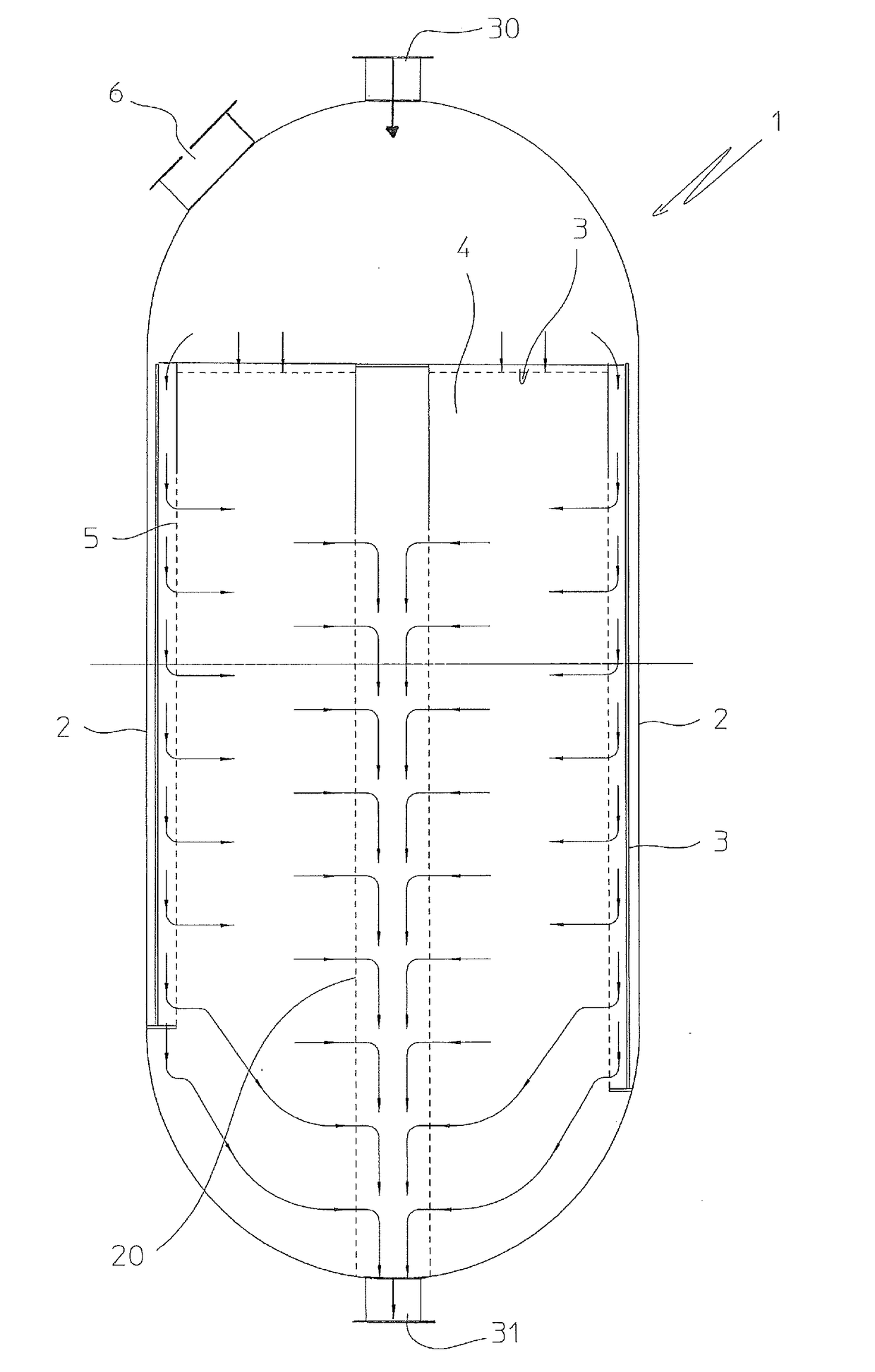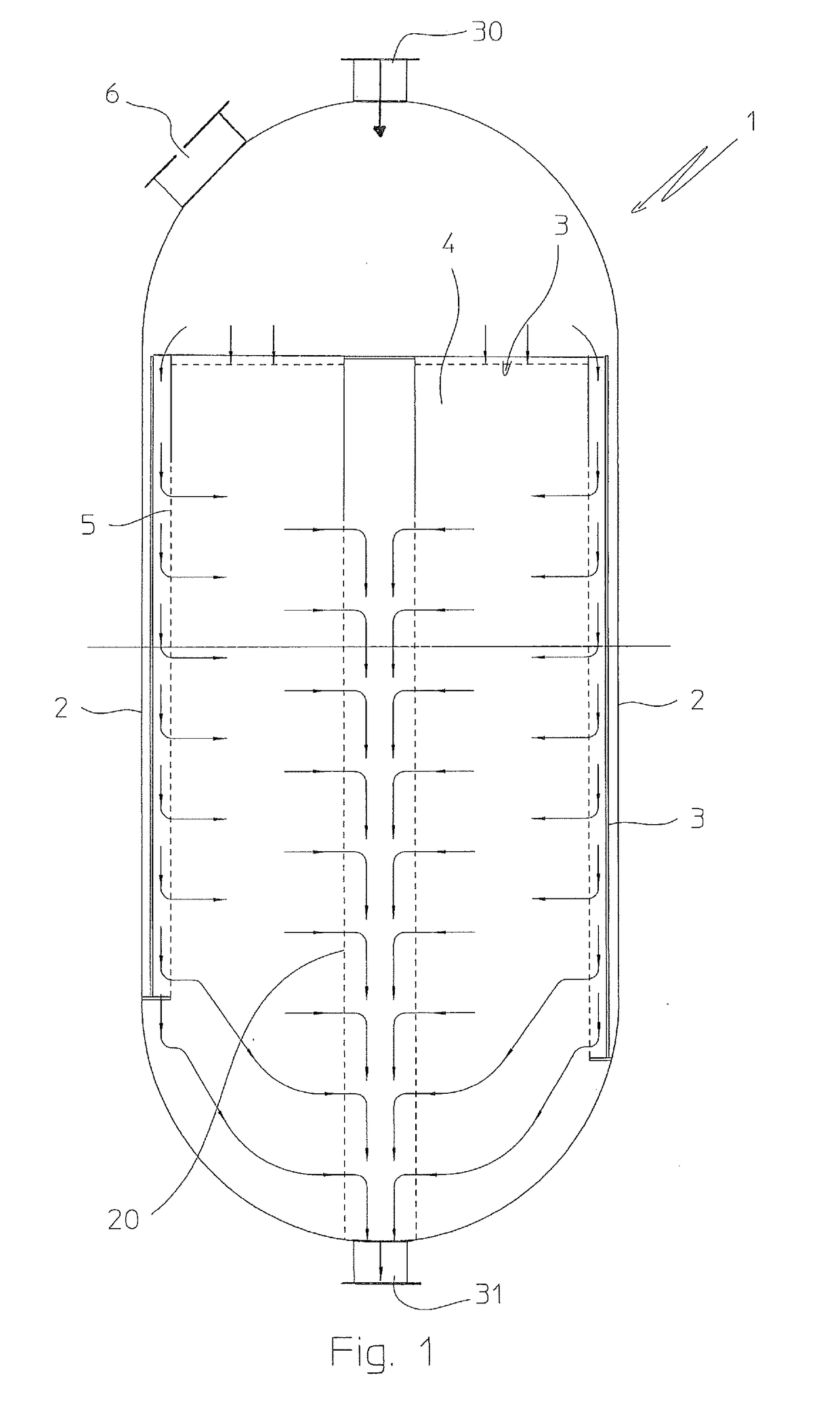Method for realizing internal walls of catalytic reactors
a technology of catalytic reactors and internal walls, which is applied in the direction of bulk chemical production, chemical/physical/physico-chemical processes, chemical apparatus and processes, etc., can solve the problems of high cost of manufacturing and assembly on-site, and high cost of internal wall parts, so as to reduce labor costs, reduce the number of parts required, and simplify the effect of internal wall construction
- Summary
- Abstract
- Description
- Claims
- Application Information
AI Technical Summary
Benefits of technology
Problems solved by technology
Method used
Image
Examples
Embodiment Construction
[0049]FIG. 1 shows a schematic illustration of a chemical reactor 1 with radial or axial-radial flow and centripetal (inward) flow, which essentially comprises: a partially open vessel 2, a catalyst cartridge 3 containing a catalyst bed 4 with the radial or axial-radial through-flow; an outer collector 5 arranged around the catalyst bed 4.
[0050]The partially open vessel 2 comprises a manhole 6 with a diameter smaller than the diameter of the vessel 2, a top inlet opening 30 and a bottom outlet opening 31 with a diameter smaller than the manhole 6.
[0051]The axial-radial through-flow of the bed 4 is achieved by means of the outer collector 5 and an inner collector 20.
[0052]The outer collector 5 rests against the cartridge 3 and has a modular design, being formed substantially by a plurality of panels which can be inserted through the manhole 6 and / or through the top opening 30.
[0053]It should be noted that the collector 5 is flexible along its transverse extension, but is rigid longit...
PUM
 Login to View More
Login to View More Abstract
Description
Claims
Application Information
 Login to View More
Login to View More - R&D
- Intellectual Property
- Life Sciences
- Materials
- Tech Scout
- Unparalleled Data Quality
- Higher Quality Content
- 60% Fewer Hallucinations
Browse by: Latest US Patents, China's latest patents, Technical Efficacy Thesaurus, Application Domain, Technology Topic, Popular Technical Reports.
© 2025 PatSnap. All rights reserved.Legal|Privacy policy|Modern Slavery Act Transparency Statement|Sitemap|About US| Contact US: help@patsnap.com



